Text
Exploring Wisconsin’s Flourishing Nature-Based Early Childhood Education Movement
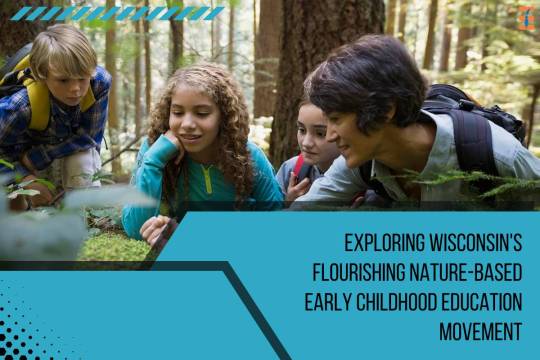
S
H
A
R
E
Source-YES! Magazine
In the heart of Wisconsin, educators like Carissa Tikalsky are pioneering a unique approach to nature-based early childhood education. At Lake Edge Learning Center in Neenah, Tikalsky’s interviews with prospective teachers are revealing moments. With a simple stick held up and a timer ticking, she poses a question: “In 30 seconds, tell us how many things this stick can be.” For Tikalsky, this isn’t just a test of creativity; it’s a litmus test for understanding the essence of nature-based early childhood education.
Nature-based early childhood education goes beyond merely spending time outdoors. While ample outdoor play is a cornerstone, it’s also about fostering resourcefulness, nurturing imagination, and instilling a sense of stewardship towards the environment. Programs like Lake Edge are becoming increasingly prevalent across Wisconsin, notes Tara Von Dollen, an adjunct instructor at the University of Wisconsin-Whitewater. However, the diversity in defining what constitutes a “nature-based” program makes it challenging to compile a centralized database.
Understanding the Spectrum of Nature-Based Education
According to Von Dollen, the spectrum of nature-based early childhood education ranges from minimal incorporation of nature to full immersion experiences. At one end, there are programs where nature serves as a backdrop for structured learning activities. On the other end lie full immersion programs like the Aldo Leopold Nature Preschool in Monona, where children spend the majority of their time outdoors, engaging with natural materials and emergent learning.
Peter Dargatz, an educator at Woodside Elementary School in Sussex, offers a glimpse into the middle ground. His kindergarten class balances structured learning with ample time spent outdoors, delving into activities like birding and gardening. Similarly, Cuddle Care in Howard strikes a balance between structured indoor activities and outdoor exploration. Co-owner Amy Coté points out their playground, which seamlessly integrates traditional play structures with nature-inspired elements like mud kitchens and climbing trees.
Embracing Nature-Based Early Childhood Education’s Complexity and Potential
Navigating the complexities of nature-based early childhood education requires acknowledging its fluidity and adaptability. Von Dollen emphasizes the importance of not just being in nature but teaching with and about nature. This holistic approach fosters a deep connection between children and the natural world, laying the foundation for lifelong environmental stewardship.
As Wisconsin witnesses a resurgence of interest in nature-based early childhood education, educators like Tikalsky, Von Dollen, and Dargatz are at the forefront, shaping the future of early childhood learning. By embracing the diversity of approaches and philosophies within the nature-based education spectrum, they’re not just preparing children for academic success but nurturing their innate curiosity and reverence for the world around them.
Also Read: The Transformative Power of Online Early Childhood Education
0 notes
Text
Unlocking Opportunities: The Impact and Significance of Sports Scholarships

S
H
A
R
E
In the realm of higher education, sports scholarships stand as a beacon of opportunity for countless aspiring athletes. These scholarships not only provide financial aid but also pave the way for academic and athletic success. As we delve into the intricate web of sports scholarships, we uncover their profound impact on individuals, educational institutions, and the broader sports landscape.
Understanding Sports Scholarships
These sports scholarships, often offered by colleges and universities, are financial awards granted to students based on their athletic abilities. These scholarships serve as a means to recruit talented athletes to enhance the sports programs of educational institutions. They can cover various expenses such as tuition fees, room and board, and other educational costs, thereby relieving some of the financial burdens on student-athletes and their families.
The Evolution of Sports Scholarships

The concept of these scholarships has evolved significantly over the years. What once started as a means to attract athletes to collegiate sports programs has now become a highly competitive and regulated system. The National Collegiate Athletic Association (NCAA) in the United States, for instance, governs the rules and regulations surrounding sports scholarships, ensuring fairness and integrity in the recruitment process.
Benefits of Sports Scholarships
These scholarships offer a multitude of benefits, both for the recipients and the institutions offering them. For student-athletes, these scholarships provide access to higher education that may have otherwise been financially out of reach. They also offer opportunities for personal and athletic development, fostering discipline, teamwork, and leadership skills. Moreover, sports scholarships can serve as a pathway to professional sports careers for exceptional athletes.
For educational institutions, sports scholarships play a crucial role in enhancing the quality and competitiveness of their sports programs. Talented athletes attract attention, boost team performance, and contribute to the overall reputation of the institution. This, in turn, can lead to increased alumni engagement, sponsorships, and media exposure.
Challenges and Controversies

Despite their numerous benefits, sports scholarships are not without challenges and controversies. One of the primary concerns is the academic eligibility of student-athletes. Critics argue that some student-athletes may prioritize their athletic pursuits over academic responsibilities, leading to concerns about academic integrity and graduation rates.
Moreover, the intense competition for these scholarships can create a high-pressure environment for young athletes. The quest for athletic success may overshadow other aspects of their lives, including academics and personal well-being. Additionally, disparities in resources and opportunities can make it challenging for students from underprivileged backgrounds to compete for sports scholarships on an equal footing.
Addressing these challenges requires a concerted effort from educational institutions, sports organizations, and policymakers. Emphasizing the importance of academic success alongside athletic achievement, providing support services for student-athletes, and promoting inclusivity and diversity in sports programs are essential steps toward creating a more equitable and sustainable system of sports scholarships.
The Future of Sports Scholarships
As we look to the future, the landscape of sports scholarships is poised for further evolution. Advances in technology and data analytics are transforming the way athletes are identified, recruited, and developed. Virtual recruiting platforms, predictive analytics, and digital scouting tools are revolutionizing the recruitment process, making it more efficient and transparent.
Furthermore, there is a growing recognition of the importance of holistic development among student-athletes. Educational institutions are increasingly prioritizing initiatives that support the overall well-being of student-athletes, including mental health resources, career development programs, and financial literacy education.
The Impact of Sports Scholarships on Society

Beyond the individual and institutional levels, sports scholarships have a ripple effect that extends to society as a whole. By investing in the education and development of student-athletes, these scholarships contribute to the social and economic prosperity of communities.
Firstly, sports scholarships serve as a vehicle for social mobility, providing opportunities for talented individuals from diverse backgrounds to pursue higher education and achieve their aspirations. For many students, especially those from underprivileged or marginalized communities, a sports scholarship may represent the only viable pathway to a college education. By breaking down financial barriers and opening doors to academic and athletic excellence, these scholarships empower individuals to transcend socio-economic limitations and pursue their dreams.
Moreover, sports scholarships have the potential to instill positive values and promote social cohesion within communities. Through participation in sports programs, student-athletes learn essential life skills such as teamwork, perseverance, and resilience. They also develop a sense of camaraderie and belonging as they work towards common goals alongside their peers. This sense of community extends beyond the confines of the playing field, fostering connections and relationships that transcend cultural, racial, and socioeconomic boundaries.
Furthermore, the success of student-athletes on the collegiate and professional stages can inspire and uplift entire communities. When local athletes excel in their respective sports, they become role models for aspiring athletes and youth in their communities. Their achievements not only bring pride and recognition to their hometowns but also serve as a testament to the transformative power of these scholarships. These success stories motivate others to pursue their passions and strive for excellence, thereby contributing to the overall vitality and resilience of society.
Challenges and Opportunities in Sports Scholarship Administration
While sports scholarships offer immense potential for positive impact, their administration presents a myriad of challenges for educational institutions, athletic departments, and governing bodies. One of the primary challenges is ensuring compliance with regulatory standards and ethical guidelines in the recruitment and retention of student-athletes. With increasing scrutiny on issues such as academic integrity, amateurism, and athlete welfare, institutions must navigate a complex landscape of rules and regulations to uphold the integrity of their sports programs.
Furthermore, the competitive nature of sports scholarships can lead to ethical dilemmas and conflicts of interest in the recruitment process. Coaches and recruiters may face pressure to prioritize athletic talent over academic qualifications, potentially compromising the academic integrity of the institution. Similarly, the pursuit of athletic success may overshadow concerns about student-athlete well-being, leading to instances of burnout, injury, or exploitation.
Addressing these challenges requires a comprehensive approach that prioritizes the holistic development and well-being of student-athletes. Educational institutions must invest in support services such as academic advising, mental health counseling, and career development to ensure that student-athletes thrive both on and off the field. Additionally, transparent communication and accountability mechanisms are essential to maintaining trust and integrity in the administration of sports scholarships.
Looking ahead, the evolving landscape of sports scholarships presents new opportunities for innovation and reform. By leveraging technology, data analytics, and best practices in athlete development, institutions can enhance the effectiveness and efficiency of their sports programs. Collaborative efforts between educational institutions, sports organizations, and community stakeholders can help foster a culture of inclusivity, diversity, and excellence in sports scholarship administration.
Conclusion
Sports scholarships are more than just financial awards; they are catalysts for transformation and opportunity. From empowering individual student-athletes to fostering social mobility and community development, these scholarships have a profound impact on individuals, institutions, and society as a whole. As we navigate the complexities and challenges of sports scholarship administration, let us remain steadfast in our commitment to upholding the values of fairness, integrity, and inclusivity. By working together to maximize the potential of sports scholarships, we can create a brighter and more equitable future for aspiring athletes and communities around the world.
Also Read: The Impact and Availability of Fully Funded Scholarships
0 notes
Text
Trump Endorses Rising Conservative Figure in Education Overhaul

S
H
A
R
E
Source- The White House
In a landscape of shifting political alliances and ideological battles, Representative Byron Donalds of Florida has emerged as a formidable force, particularly in the realm of education reform. With roots in evangelical Christianity and a staunch support for former President Donald J. Trump, Donalds has carved out a niche as a conservative ‘warrior’, advocating for sweeping changes in public education.
Donalds’ journey from a humble upbringing in Brooklyn to a prominent figure in Florida politics is marked by his unwavering commitment to his beliefs. His involvement with organizations like the Truth & Liberty Coalition, which seeks to infuse Christianity into public schools, underscores his dedication to reshaping the education system to align with conservative values.
The Donaldses’ Education Crusade
Alongside his wife, Erika, Donalds has been at the forefront of a movement aimed at overhauling public education in Florida and beyond. Through initiatives such as charter schools and voucher programs, they’ve advocated for what they term a “biblical worldview education,” challenging the dominance of liberal ideologies in traditional public schools.
Their activism extends beyond rhetoric, with Mrs. Donalds spearheading the establishment of a charter school in Florida. Meanwhile, Mr. Donalds’ legislative efforts have focused on expanding access to charter schools and empowering outside groups to influence school curriculums.
However, their positions have sparked controversy, particularly regarding their stance on LGBTQ+ issues. Both have made statements disparaging homosexuality, aligning themselves with conservative groups that seek to restrict teaching on sexuality and gender in schools.
Trump’s Endorsement and the Future
Donalds’ unwavering support for Trump has not gone unnoticed. The former president has publicly praised him as a potential future governor of Florida and even a potential running mate. Trump’s endorsement speaks to Donalds’ rising prominence within the conservative movement, particularly in the realm of education reform.
As Trump continues to rally his base around the idea of dismantling what he perceives as leftist influence in public schools, figures like the Donaldses are poised to play a pivotal role. Their alignment with Trump’s vision of education reform, coupled with their growing national profile, positions them as key players in the ongoing battle over the direction of America’s schools.
With the 2024 election looming on the horizon, the Donaldses’ influence is likely to only grow, as they navigate the intersection of politics, ideology, and education reform in America. Whether their vision will ultimately reshape the educational landscape remains to be seen, but one thing is certain: they have emerged as formidable contenders in the ongoing struggle for control over the nation’s schools.
Also Read: The Rise of Tech Schools: Shaping Tomorrow’s Innovators
0 notes
Text
Navigating the Nuances of Hospitality Management: A Comprehensive Guide

S
H
A
R
E
In the dynamic realm of hospitality management, the convergence of service excellence, operational efficiency, and guest satisfaction forms the cornerstone of success. From luxurious resorts to bustling restaurants, the intricate interplay between hospitality principles and business acumen shapes every aspect of the industry. This article embarks on an exploratory journey, delving deep into the multifaceted landscape of hospitality management, and unraveling its essence, challenges, and best practices.
Understanding Hospitality Management:
At its core, hospitality management encompasses the art of creating memorable experiences for guests while ensuring seamless operations behind the scenes. It involves a harmonious blend of customer service, marketing strategies, financial acumen, and human resource management. Whether it’s orchestrating a flawless check-in process or curating delectable culinary offerings, every facet of hospitality management contributes to the overarching goal of guest satisfaction and loyalty.
The Pillars of Hospitality Management:

1. Customer Service Excellence
Exceptional customer service lies at the heart of hospitality management. It entails anticipating guest needs, providing personalized attention, and resolving issues promptly and courteously. From front-line staff to management personnel, fostering a culture of service excellence is paramount to building lasting guest relationships.
2. Operational Efficiency
Efficient operations are essential for delivering seamless guest experiences while maximizing profitability. This involves optimizing workflows, streamlining processes, and harnessing technology to enhance efficiency across departments. Whether it’s inventory management in a hotel kitchen or table-turnover rates in a restaurant, operational excellence is a cornerstone of successful hospitality management.
3. Strategic Marketing
Effective marketing strategies play a pivotal role in attracting guests and fostering brand loyalty. From digital marketing campaigns to loyalty programs, hospitality managers must leverage various channels to engage with potential guests and cultivate a strong brand presence. Understanding market trends, consumer preferences, and competitor analysis are key components of strategic marketing in hospitality management.
4. Financial Acumen
Sound financial management is imperative for the long-term sustainability of hospitality establishments. This includes budgeting, forecasting, revenue management, and cost control measures to optimize profitability while maintaining service quality. Hospitality managers must possess a keen understanding of financial metrics and industry benchmarks to make informed decisions that drive business growth.
5. Human Resource Management
The success of any hospitality venture hinges on its people. Effective recruitment, training, and development programs are essential for nurturing a skilled and motivated workforce. Moreover, fostering a positive work culture, promoting teamwork, and recognizing employee contributions are crucial for employee retention and morale.
Challenges in Hospitality Management:

Despite its rewards, hospitality management is not without its challenges. From shifting consumer preferences to unforeseen crises, managers must navigate a myriad of obstacles to ensure operational resilience and guest satisfaction. Staff turnover, rising operating costs, technological disruptions, and reputational risks are among the common challenges faced by hospitality establishments. Moreover, the increasingly competitive landscape necessitates constant innovation and adaptation to stay ahead of the curve.
Best Practices in Hospitality Management:
1. Embrace Technology
From online booking platforms to mobile check-in apps, technology has revolutionized the hospitality industry. Embracing innovative solutions such as property management systems, revenue management software, and guest feedback platforms can streamline operations and enhance the guest experience.
2. Invest in Training and Development
A well-trained and motivated workforce is essential for delivering exceptional service. Invest in comprehensive training programs that equip staff with the skills and knowledge required to excel in their roles. Moreover, provide ongoing opportunities for professional development and career advancement to foster employee loyalty and retention.
3. Prioritize Sustainability
In an era of heightened environmental awareness, sustainability has emerged as a key consideration for hospitality management. Implement eco-friendly practices such as energy conservation, waste reduction, and locally sourced ingredients to minimize environmental impact and appeal to conscientious travelers.
4. Foster a Culture of Continuous Improvement
Hospitality management is a dynamic field that requires constant adaptation and improvement. Encourage a culture of innovation and continuous improvement, where staff are empowered to identify and implement solutions that enhance guest satisfaction and operational efficiency.
5. Adapt to Changing Consumer Preferences
Consumer preferences in the hospitality industry are constantly evolving, influenced by factors such as technology, demographics, and societal trends. Stay attuned to shifting consumer behaviors and preferences, and be agile in adapting your offerings and service delivery to meet evolving demands. Whether it’s embracing new dining trends, incorporating wellness experiences, or catering to the preferences of millennial and Gen Z travelers, staying ahead of the curve is essential for maintaining relevance in a competitive market.
6. Cultivate a Strong Brand Identity
A strong brand identity sets hospitality establishments apart in a crowded marketplace, fostering trust and loyalty among guests. Invest in developing a compelling brand narrative, distinctive visual identity, and consistent brand messaging across all touchpoints. By aligning your brand with the values and aspirations of your target audience, you can forge deeper connections and create lasting impressions that resonate long after the guest’s stay.
7. Prioritize Guest Feedback and Engagement
Guest feedback is a valuable source of insights that can inform strategic decision-making and drive continuous improvement. Implement robust feedback mechanisms, such as post-stay surveys, online reviews, and social media monitoring, to solicit guest feedback at every touchpoint. Actively engage with guests, respond to feedback promptly, and demonstrate a commitment to addressing their concerns and enhancing their experience. By placing the guest at the center of your operations, you can cultivate loyalty and advocacy that fuels long-term success.
8. Build Strategic Partnerships

Collaborating with complementary businesses and organizations can unlock new opportunities for growth and differentiation in the hospitality industry. Whether it’s forging partnerships with local attractions, event organizers, or corporate clients, strategic alliances can expand your reach, enhance your offerings, and drive incremental revenue. By leveraging the strengths and resources of partners, hospitality establishments can create value-added experiences that resonate with guests and set them apart from competitors.
9. Stay Resilient in the Face of Challenges
The hospitality industry is inherently susceptible to various external challenges, ranging from economic downturns to natural disasters. Building resilience requires proactive risk management strategies, contingency planning, and agile decision-making to mitigate the impact of unforeseen events. Moreover, fostering a culture of adaptability, teamwork, and perseverance among staff can help weather storms and emerge stronger on the other side.
10. Embrace Diversity and Inclusion
Diversity and inclusion are not only moral imperatives but also drivers of innovation and competitiveness in the hospitality industry. Embrace diversity in your workforce, leadership team, and guest demographics, fostering an inclusive environment where individuals of all backgrounds feel valued and respected. By harnessing the unique perspectives and talents of a diverse workforce, hospitality establishments can better understand and cater to the needs of a global audience, driving creativity, and innovation.
Conclusion:
Hospitality management is a dynamic and multifaceted discipline that requires a holistic approach encompassing service excellence, operational efficiency, strategic innovation, and a deep understanding of consumer preferences. By embracing best practices, staying attuned to market dynamics, and fostering a culture of continuous improvement, hospitality establishments can thrive in an ever-evolving landscape, delighting guests and driving sustainable growth. As the industry continues to evolve, the principles of hospitality management remain timeless, serving as guiding beacons for success in a competitive marketplace.
0 notes
Text
Ohio Democrats Propose Sweeping Education Reforms to Address Funding, Vouchers, and Student Welfare

S
H
A
R
E
Source-Cleveland.com
Ohio Democrats are spearheading a comprehensive set of bills aimed at revitalizing the state’s education system. With a focus on equitable funding and oversight, these measures are poised to reshape education policy in Ohio. At the forefront of this initiative is House Bill 10, which seeks to enforce the six-year phase-in plan outlined in the Fair School Funding Plan. This bipartisan bill underscores the commitment to ensuring that every student, regardless of their location, has access to a quality education. However, concerns linger over the fate of this plan, prompting Democrats to emphasize the need for sustained funding and support for public schools.
Increased Oversight of Private School Vouchers
In tandem with efforts to bolster public school funding, Ohio Democrats are advocating for greater scrutiny of private school voucher programs. House Bill 575, introduced by Representative Dani Isaacsohn, aims to enhance oversight measures for private schools that enroll a significant number of voucher recipients. By imposing financial accountability and testing transparency standards, Democrats seek to ensure that taxpayer dollars are used effectively. Additionally, House Bill 567, championed by Representative Phil Robinson Jr., seeks to recalibrate income eligibility limits for private school vouchers, prioritizing assistance for low-income families. These proposals underscore the Democrats’ commitment to accountability and equity in education.
Prioritizing Student Welfare and Local Control
Beyond funding and oversight, Ohio Democrats are championing initiatives to address student welfare and restore local control in education. House Bill 408 proposes the establishment of a universal public school meals program, recognizing the vital role nutrition plays in student success. Similarly, House Bill 387 seeks to eliminate academic distress commissions, returning decision-making power to local communities. This holistic approach to education reform underscores the Democrats’ commitment to nurturing the well-being of students and empowering local stakeholders.
Despite the merits of these proposals, their passage may face challenges in a legislature dominated by a Republican supermajority. With entrenched support for private school vouchers and the concept of “school choice,” Democrats anticipate resistance to their reform agenda. Nevertheless, with the backing of major education unions and a steadfast commitment to equity and accountability, Ohio Democrats remain undeterred in their pursuit of a brighter future for the state’s students.
Also Read: Unraveling the Essence: Exploring the Philosophy of Education
0 notes
Text
The Rise of Tech Schools: Shaping Tomorrow’s Innovators

S
H
A
R
E
In an era dominated by technology, where innovation drives progress and industries rapidly evolve, the demand for skilled professionals in STEM (Science, Technology, Engineering, and Mathematics) fields has never been higher. Traditional educational institutions have long been the cornerstone of learning, but a new player has emerged on the scene: tech schools. These specialized institutions are gaining traction as they offer focused, hands-on training in cutting-edge technologies, preparing students for the demands of the modern workforce. In this article, we delve into the phenomenon of tech schools, exploring their significance, benefits, and impact on shaping tomorrow’s innovators.
Understanding Tech Schools:
Tech schools, also known as coding boot camps, vocational schools, or technical institutes, are educational institutions that prioritize practical, industry-relevant skills over traditional academic coursework. They offer intensive, short-term programs designed to equip students with the technical expertise needed to succeed in specific fields such as software development, data science, cybersecurity, and digital marketing.
The Evolution of Education:

The traditional education system, while valuable in providing a broad foundation of knowledge, often falls short of keeping pace with rapidly evolving technologies and industry demands. Tech schools fill this gap by offering specialized, up-to-date curricula that align closely with the needs of employers. These institutions emphasize hands-on learning, project-based assignments, and real-world applications, providing students with practical skills that are immediately applicable in the workforce.
Benefits of Tech Schools:
One of the key advantages of tech schools is their agility and flexibility. Unlike traditional four-year degree programs, which can take several years to complete, tech school programs are typically condensed into a matter of months. This accelerated format allows students to quickly gain relevant skills and enter the job market in a fraction of the time.
Moreover, tech schools often have strong industry connections and partnerships, providing students with opportunities for internships, job placements, and networking events. Many tech companies actively recruit graduates from these programs, recognizing the value of their specialized skill sets and practical experience.
Additionally, tech schools are more accessible to individuals from diverse backgrounds. They often have lower barriers to entry, with no stringent admission requirements or prerequisites. This inclusivity opens doors for career changers, underrepresented minorities, and individuals looking to upskill or reskill in response to changing market trends.
Impact on the Workforce:
The proliferation of these schools is reshaping the landscape of the workforce. As industries increasingly rely on technology to drive innovation and efficiency, the demand for skilled tech professionals continues to soar. Tech schools play a crucial role in bridging the gap between talent supply and demand, producing a pipeline of qualified candidates equipped to tackle the challenges of the digital age.
Furthermore, the rise of these schools is disrupting traditional notions of education and credentialing. While a college degree was once considered the gold standard for career advancement, employers are now placing greater emphasis on demonstrated skills and practical experience. This shift in mindset benefits graduates of tech schools, who can showcase their proficiency through portfolio projects, certifications, and hands-on assessments.
Challenges and Considerations:

Despite their many benefits, tech schools also face challenges and criticisms. Critics argue that these programs may prioritize quantity over quality, leading to concerns about the rigor of instruction and the adequacy of student outcomes. Additionally, the rapid pace of technological change means that curriculum content can quickly become outdated, requiring constant adaptation and updates.
Moreover, the cost of tech school programs can be prohibitive for some individuals, especially those from lower-income backgrounds. While financial aid options and income-sharing agreements may alleviate some of the financial burden, affordability remains a significant barrier for many prospective students.
Looking Ahead:
As technology continues to advance and reshape the world around us, the role of tech schools will only become more prominent. These institutions serve as dynamic hubs of innovation, empowering individuals to acquire the skills they need to thrive in the digital economy. By offering practical, industry-driven education that is accessible and relevant, tech schools are shaping the future workforce and driving societal progress.
Overcoming Challenges and Expanding Opportunities:
In response to the challenges facing tech schools, stakeholders are actively working to address concerns and enhance the overall efficacy of these programs. Quality assurance measures, such as accreditation and industry partnerships, help ensure that curriculum content remains relevant and aligned with industry standards. Additionally, ongoing professional development for instructors and regular program evaluations contribute to maintaining the quality of education.
To address the affordability issue, some tech schools offer scholarships, grants, and income-sharing agreements to make their programs more accessible to a broader range of students. Furthermore, initiatives to increase diversity and inclusion within these schools aim to create equitable opportunities for individuals from underrepresented backgrounds, fostering a more diverse and innovative workforce.
The future of tech schools is not only about addressing current challenges but also about seizing new opportunities. As emerging technologies like artificial intelligence, blockchain, and quantum computing continue to redefine industries, tech schools have the opportunity to evolve their programs to meet the evolving needs of the workforce. By staying at the forefront of technological innovation and industry trends, these institutions can ensure that their graduates remain in high demand.
The Role of Tech Schools in Lifelong Learning:
In addition to serving as launchpads for entry-level tech careers, these schools can also play a role in facilitating lifelong learning and professional development. The rapid pace of technological change necessitates ongoing skill acquisition and adaptation. These schools can offer advanced courses, workshops, and certifications to help professionals stay ahead of the curve and remain competitive in the job market.
Moreover, as the gig economy and remote work trends continue to grow, tech schools can provide valuable training in freelancing, entrepreneurship, and remote collaboration. These skills are essential for individuals seeking flexibility and autonomy in their careers, allowing them to thrive in the ever-changing landscape of work.
Global Impact and Collaboration:

The impact of these schools extends beyond national borders, with many institutions collaborating on a global scale to address shared challenges and opportunities. International partnerships facilitate knowledge exchange, cultural understanding, and collaborative research efforts, enriching the learning experience for students and preparing them for a globalized workforce.
Furthermore, initiatives such as study abroad programs, international internships, and cross-border innovation projects allow students to gain firsthand experience in diverse cultural and economic contexts. This exposure not only broadens their perspectives but also fosters collaboration and innovation on a global scale.
Conclusion:
Tech schools represent a dynamic and transformative force in education, empowering individuals to acquire the skills they need to succeed in the digital age. By offering practical, industry-relevant training that is accessible, affordable, and flexible, these institutions are democratizing access to high-quality tech education and expanding opportunities for individuals from all walks of life.
As we navigate the complexities of the 21st-century workforce, tech schools will continue to play a vital role in shaping tomorrow’s innovators and driving technological advancement forward. By addressing challenges, embracing opportunities, and fostering collaboration on a global scale, tech schools are poised to make a lasting impact on the future of education and the workforce. As we look ahead, let us embrace the potential of these schools to empower individuals, transform industries, and create a more prosperous and inclusive society for all.
Also Read: Unlocking Potential: The Transformative Power of Trade Schools
0 notes
Text
Navigating the Underground Railroad to Public Education: A Fight Against Segregation in Schools
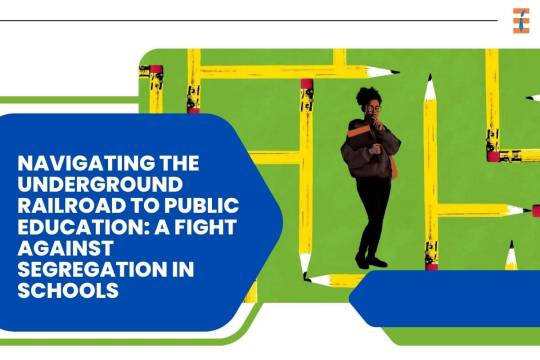
S
H
A
R
E
Source-Axios
Parents across the United States are engaging in a clandestine movement, dubbed the “Underground Railroad to Public Education,” to liberate their children from the confines of segregated and subpar schools. Faced with rigid school boundaries that perpetuate racial and economic segregation, these parents are determined to secure better educational opportunities for their children, often at great personal risk.
As the nation commemorates the 70th anniversary of the historic Brown v. Board of Education ruling, reports from advocacy groups like Available to All and Yes. every kid. shed light on the detrimental impact of strict school boundaries on perpetuating segregation. These reports underscore the urgent need to abolish such boundaries and enact laws that protect families seeking enrollment in schools that offer quality education.
The Underground Railroad to Public Education operates through a network of information sharing, carpools, and meticulous research of laws. Parent activist Kelley Williams-Bolar, whose own experience with legal repercussions for enrolling her children in a better school ignited national attention, describes it as a movement driven by the simple desire for the best for their children, free from the threat of criminalization.
Challenges and Racial Biases in School Boundaries: A Closer Look
In states like New Mexico, where Navajo parents navigate complex logistics to access better schools, Superintendent Karen Sanchez-Griego emphasizes that the goal is to secure what’s best for their children. However, challenges persist as districts resort to extreme measures, such as hiring private detectives to monitor parental compliance with school boundaries.
While districts argue for the necessity of boundaries to maintain order and allocate resources, advocates like Tim DeRoche and Halli Faulkner highlight the deeply entrenched racial biases underlying these divisions. They argue that boundaries often reflect historical redlining practices, perpetuating systemic inequalities in access to education.
African-american Student Chosen to Play ‘slave’ in Underground Railroad to Public Education Lesson at School
youtube
Challenging Boundaries: The Continuing Struggle for Educational Equality
Looking ahead, legislative efforts in states like South Carolina and North Carolina signal potential shifts towards open enrollment policies that prioritize educational equity. Yet, legal battles, such as the lawsuit filed by the NAACP and the Latino Action Network against New Jersey’s residential assignment of public schools, underscore the ongoing struggle for educational justice.
In the fight against segregation in education, the Underground Railroad to Public Education serves as a poignant reminder of the enduring resilience and determination of parents to break free from the shackles of inequality and secure a brighter future for their children.
Also Read: Philadelphia’s Education Leaders Address Crucial Issues in Inaugural State of Public Education
0 notes
Text
Unraveling the Essence: Exploring the Philosophy of Education

S
H
A
R
E
Philosophy of education delves into the fundamental principles and beliefs that underpin the educational process. It serves as a guiding light, shaping education’s goals, methods, and content. As an interdisciplinary field, it draws from philosophy, psychology, sociology, and pedagogy to ponder questions about the nature of knowledge, the purpose of education, and the role of educators. In this discourse, we embark on a journey to unravel the essence of the philosophy of education, exploring its various dimensions and implications.
Understanding the Essence:
At its core, the philosophy of education seeks to address profound inquiries concerning the nature of learning and teaching. It grapples with questions such as: What is the purpose of education? What constitutes knowledge? How do individuals learn? These inquiries serve as the cornerstone for developing educational theories and practices.
Purpose of Education:

One of the central themes in the philosophy of education is the purpose or aims of education. Different philosophical perspectives offer diverse answers to this question. For instance, proponents of essentialism argue for a traditional, content-focused approach aimed at transmitting cultural heritage and essential knowledge to successive generations. In contrast, progressivism advocates for a student-centered approach that emphasizes experiential learning and the development of critical thinking skills.
Epistemology and Learning:
Epistemology, the branch of philosophy concerned with the nature of knowledge, holds significant relevance in the philosophy of education. Various theories of learning, such as behaviorism, cognitivism, and constructivism, are grounded in different epistemological assumptions. Behaviorists view learning as a process of stimulus-response associations, while cognitivists focus on mental processes like memory and problem-solving. Constructivists posit that learners actively construct knowledge through interactions with their environment.
Role of Educators:
The philosophy of education also contemplates the role of educators in facilitating learning. Are they mere disseminators of information, or should they adopt a more facilitative and transformative approach? Philosophers like John Dewey advocate for educators as facilitators who guide students in actively constructing their understanding of the world. Paulo Freire extends this notion, emphasizing the educator’s role in fostering critical consciousness and empowering learners to challenge oppressive structures.
Ethical Dimensions:
Ethical considerations permeate the philosophy of education, influencing decisions about curriculum content, pedagogical methods, and educational policies. Questions about what knowledge is worth teaching, how to address diversity and inclusivity, and the distribution of educational resources all have ethical implications. For instance, the debate over multicultural education raises questions about whose perspectives are privileged in the curriculum and how to promote respect for diverse cultural identities.
Cultural and Societal Context:
The philosophy of education cannot be divorced from its cultural and societal context. Educational philosophies vary across cultures and historical periods, reflecting different values, beliefs, and priorities. For instance, Confucian education emphasizes moral cultivation and filial piety, while Western education tends to prioritize individualism and critical inquiry. Moreover, societal changes, such as advances in technology and globalization, continually shape educational practices and goals.
Critical Reflection and Continuous Improvement:

Philosophy of education encourages critical reflection on existing educational practices and systems. Educators and policymakers are urged to interrogate the underlying assumptions and values that inform their decisions. By engaging in reflective practice, stakeholders can identify areas for improvement and innovation, fostering a culture of continuous learning and development.
Challenges and Controversies:
Despite its profound insights, the philosophy of education grapples with various challenges and controversies. Debates rage over issues such as standardized testing, privatization of education, and the commercialization of knowledge. Moreover, competing philosophical perspectives often lead to tensions between different educational stakeholders, complicating efforts to enact meaningful reforms.
Standardized testing, for instance, is a contentious topic that pits proponents of accountability and measurement against those who advocate for more holistic and authentic forms of assessment. Critics argue that standardized tests prioritize rote memorization over critical thinking and fail to capture the complexities of student learning. Furthermore, they argue that such tests perpetuate inequities by disadvantaging marginalized students who may not have access to the resources needed to excel on these exams.
Privatization of education is another area of concern within the philosophy of education. The rise of charter schools, voucher programs, and for-profit educational institutions has sparked debates about the role of the state in providing equitable and high-quality education. Proponents argue that privatization fosters competition and innovation, leading to improved outcomes for students. However, critics caution that it can exacerbate existing inequalities by diverting resources away from public schools and catering to the interests of affluent families.
The commercialization of knowledge is also a growing concern in the philosophy of education. With the proliferation of educational technology platforms, publishing companies, and online learning courses, education has become increasingly commodified. This trend raises questions about the ethics of selling educational products and services, as well as the implications for academic freedom and intellectual property rights.
Navigating these challenges requires a nuanced understanding of the philosophical underpinnings of education and a commitment to ethical decision-making. Educators, policymakers, and stakeholders must engage in critical dialogue and reflection to address these issues responsibly.
Future Directions:

As we look to the future, the philosophy of education will continue to evolve in response to emerging societal trends and educational innovations. One promising direction is the integration of interdisciplinary perspectives into educational practice and research. By drawing on insights from fields such as neuroscience, sociology, and environmental studies, educators can develop more holistic and responsive approaches to teaching and learning.
Furthermore, there is a growing recognition of the importance of global citizenship education in an increasingly interconnected world. Educators are exploring ways to foster students’ understanding of global issues, promote intercultural competence, and cultivate a sense of responsibility towards the planet and its inhabitants.
Additionally, there is a renewed emphasis on education for social justice and equity. In light of persistent inequalities based on race, gender, socioeconomic status, and other factors, there is a pressing need to address systemic injustices within educational systems. This requires a commitment to dismantling barriers to access and opportunity, fostering inclusive learning environments, and empowering marginalized voices.
Conclusion:
In conclusion, the philosophy of education remains a vibrant and dynamic field that continues to shape educational theory, policy, and practice. By grappling with questions about the purpose of education, the nature of learning, and the role of educators, it offers valuable insights into how to create more equitable, meaningful, and transformative educational experiences for all learners. As we confront the challenges of the 21st century, a deep understanding of the philosophical foundations of education will be essential for navigating uncertain terrain and realizing the full potential of education to enrich lives and empower communities.
Also Read: Crafting Creativity: The Power and Promise of Maker Education
0 notes
Text
New Driving Education Law to Transform Young Driver Training in Colorado

S
H
A
R
E
In a significant move aimed at enhancing road safety, Colorado lawmakers have passed House Bill 24-1021, the Motor Vehicle Minor Driver Education Standards bill. Signed into a new driving education law in mid-May, this new legislation mandates an increase in the education hours required for drivers under 18 to obtain an instruction permit. The bill, set to take effect on April 1, 2026, represents a major overhaul of the state’s approach to young driver education.
Previously, young drivers aged 15 and a half to 16 could receive an instruction permit after completing either a driver education course or a four-hour driver awareness course. Those under 15 and a half were required to complete a driver education course, including 30 hours of classroom instruction and six hours of behind-the-wheel training with a professional instructor or 12 hours with a qualified adult.
Under the new driving education law, these requirements have been standardized and expanded. All drivers under 18 must now complete a 30-hour driver education course and at least six hours of behind-the-wheel training with a professional instructor or 12 hours with a guardian or responsible adult. Additionally, minors aged 18 to 21 must complete a four-hour prequalification driver awareness program before obtaining a permit. These measures are designed to ensure that young drivers are better prepared for the challenges of driving, thereby reducing the risk of accidents.
Enhanced Instructor Monitoring
In a further bid to safeguard young and vulnerable drivers, the new driving education law includes stringent measures to monitor driving instructors. The bill explicitly prohibits individuals convicted of violent or sexual crimes from providing behind-the-wheel instruction to minors and at-risk adults. To enforce this, commercial driving instructors will be required to undergo fingerprinting to verify they have not committed any disqualifying offenses. This provision aims to enhance the safety and integrity of the driver education process, ensuring that only qualified and trustworthy individuals are entrusted with the critical task of teaching young drivers.
New Driving Education Law to change requirements for driver’s ed in Colorado
youtube
Implementation and Impact
While the new requirements mark a significant shift in the driver education landscape, their implementation is set for April 1, 2026. This lead time allows driver education programs, instructors, and families to adjust to the new standards. The phased approach aims to minimize disruption while maximizing the benefits of enhanced driver education.
The passage of House Bill 24-1021 reflects Colorado’s commitment to improving road safety and ensuring that young drivers are adequately prepared for the responsibilities of driving. By increasing education hours and imposing stricter regulations on instructors, the state hopes to cultivate a new generation of well-trained and safety-conscious drivers.
As Colorado looks ahead to the implementation of these changes, the overarching goal remains clear: to reduce accidents and fatalities on the roads by equipping young drivers with the knowledge and skills they need to drive safely. The new driving education law underscores the importance of comprehensive driver education and the critical role it plays in fostering a safer driving environment for all.
In summary, the Motor Vehicle Minor Driver Education Standards bill is a forward-thinking piece of legislation that addresses the need for more rigorous training and oversight in young driver education. Its successful implementation could serve as a model for other states looking to enhance their own driver training programs.
Also Read: The Ripple Effect: How Education Affects Society
0 notes
Text
Intersection of Culture and Education: The Significance of Educational Anthropology
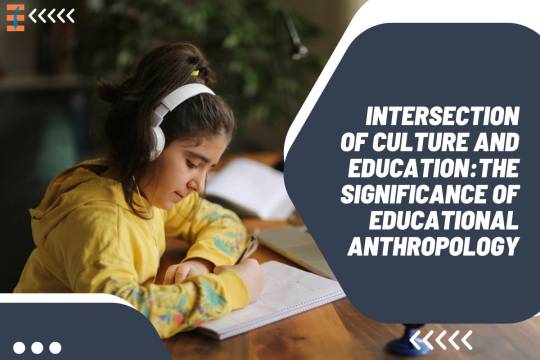
S
H
A
R
E
Education is not a mere transmission of knowledge; it is a complex interplay of cultural, social, and individual factors. To truly understand the dynamics of education, one must delve into the realm of educational anthropology. Educational anthropology, a subfield of anthropology, examines how culture influences learning, teaching, and educational systems. It sheds light on the diverse ways in which societies educate their members, offering insights into the purposes, methods, and outcomes of education across different cultures and contexts. In this article, we will explore the significance of educational anthropology in comprehending the multifaceted nature of education.
Understanding Educational Anthropology:
Educational anthropology investigates the cultural foundations of education, emphasizing the interconnections between cultural practices, beliefs, and educational processes. It seeks to answer fundamental questions such as: How do cultural values shape educational goals and practices? What role do social institutions play in transmitting knowledge and skills? How do individuals negotiate their identities within educational contexts?
One of the key concepts in educational anthropology is cultural relativism, which asserts that educational practices should be understood within their cultural contexts, without imposing external standards or judgments. This perspective challenges ethnocentric views of education and encourages scholars to examine education from the insider’s perspective, taking into account local meanings and values.
Anthropologists employ various research methods, including ethnography, participant observation, and interviews, to study educational phenomena in diverse settings. Through in-depth immersion in communities and schools, they gain insights into the intricacies of educational systems and the cultural factors that shape them.
The Significance of Educational Anthropology:
Educational anthropology offers several contributions to our understanding of education:
1. Cultural Diversity
In an increasingly globalized world, educational anthropology highlights the diversity of educational practices and beliefs. By studying different cultural models of education, researchers gain an appreciation for the rich variety of ways knowledge is transmitted and acquired.
2. Power Dynamics

Education is not neutral; it reflects and reinforces power relations within society. Educational anthropologists examine how educational systems perpetuate or challenge existing inequalities based on race, class, gender, and ethnicity. They investigate issues of access, equity, and social justice in education, advocating for inclusive and empowering educational practices.
3. Identity Formation
Education plays a crucial role in shaping individual identities. Educational anthropologists explore how students construct their identities within educational contexts, negotiating between cultural expectations and personal aspirations. They examine the impact of schooling on identity formation, including issues of cultural identity, language acquisition, and acculturation.
4. Policy Implications
Educational anthropology informs educational policy and practice by providing insights into the cultural dimensions of education. Policymakers and educators can benefit from anthropological research on topics such as multicultural education, bilingualism, and indigenous knowledge systems. By understanding the cultural contexts of education, they can develop more effective and culturally responsive policies and programs.
Case Studies in Educational Anthropology:
To illustrate the significance of educational anthropology, let us consider two case studies:
1. Indigenous Education in Australia
Educational anthropologists have studied the educational experiences of Indigenous communities in Australia, highlighting the importance of culturally relevant curriculum and pedagogy. By collaborating with Indigenous elders and community members, researchers have developed educational initiatives that incorporate Indigenous knowledge and perspectives, fostering a sense of cultural pride and identity among Indigenous students.
2. Gender and Education in Sub-Saharan Africa

In many parts of Sub-Saharan Africa, educational anthropologists have examined the gendered dynamics of schooling, exploring how cultural norms and practices shape educational opportunities for boys and girls. Their research has revealed the complex interplay of factors such as household responsibilities, gender roles, and access to resources, influencing girls’ participation and achievement in education. By addressing these issues, policymakers can work towards gender-equitable educational systems.
Challenges and Future Directions:
While educational anthropology has made significant contributions to our understanding of education, it also faces several challenges and opportunities for future research and practice.
1. Globalization and Cultural Hybridity
As societies become increasingly interconnected, educational anthropologists must grapple with the complexities of cultural hybridity and globalization. How do global forces influence local educational practices? How do communities navigate between traditional cultural values and external influences? Researchers need to explore these questions to understand the evolving nature of education in a globalized world.
2. Technology and Education
The integration of technology into education presents both opportunities and challenges. Educational anthropologists can examine how digital technologies shape teaching and learning practices, as well as their impact on cultural norms and values. They can also explore issues of digital equity and access, ensuring that technological innovations benefit all learners, regardless of their socio-cultural background.
3. Migration and Education

Migration has profound implications for education, as migrants often encounter unfamiliar educational systems and cultural contexts. Educational anthropologists can study the experiences of migrant students and their families, exploring issues of language acquisition, acculturation, and identity formation. By understanding the educational needs of migrant populations, researchers can advocate for policies and programs that support their integration and success in education.
4. Environmental Education
With growing concerns about environmental sustainability, educational anthropologists can investigate the cultural dimensions of environmental education. How do different cultures conceptualize and transmit knowledge about the environment? How can education promote ecological literacy and sustainable practices across diverse cultural contexts? By engaging with these questions, researchers can contribute to efforts to address global environmental challenges through education.
Conclusion:
Educational anthropology offers a unique lens through which to examine the complex interplay of culture and education. By studying the cultural foundations of education, anthropologists enhance our understanding of the diverse ways in which societies transmit knowledge, values, and skills to the next generation. As we confront the challenges of globalization, technological advancement, migration, and environmental sustainability, the insights of educational anthropology become increasingly relevant. By embracing cultural diversity, promoting social justice, and fostering inclusive educational practices, we can work towards a more equitable and enriching educational experience for all learners, regardless of their cultural background or circumstances. In this way, educational anthropology continues to play a vital role in shaping the future of education in a rapidly changing world.
Also Read: Exploring the Essence and Impact of Organizational Culture
0 notes
Text
Combating Antisemitism Through Education in NYC Schools

S
H
A
R
E
New York City officials are set to combat a rise in antisemitism within New York City schools through the introduction of a comprehensive new curriculum next year. Chancellor David Banks announced the initiative on Wednesday during the Jewish Children’s Museum’s 19th-anniversary gala dinner. This curriculum is a collaborative effort between the museum and the city’s Department of Education, aimed at tackling antisemitism directly by fostering a deeper understanding of Jewish culture among students.
“We are creating a brand new curriculum for the first time,” Chancellor Banks stated. “Right now in New York State, it is the law. We teach about the Holocaust in grades eight, nine, and eleven, but we don’t teach the full breadth of the Jewish experience.”
The need for such an initiative is underscored by recent statistics from the Department of Education, which reports at least 281 incidents of religious bias since last October, including numerous cases of antisemitism and Islamophobia. The announcement signifies a robust step towards addressing these issues through educational reform.
Honoring a Legacy
The Jewish Children’s Museum, co-founded by Devorah Halberstam after the antisemitic murder of her teenage son Ari Halberstam 30 years ago, plays a pivotal role in this initiative. Devorah Halberstam hopes this new effort will honor her son’s memory by promoting acceptance and understanding within New York City schools.
“When you learn and you teach, that’s how it changes the hearts and minds of people,” Devorah expressed. The museum has long been a beacon of cultural education and interfaith dialogue, and its involvement in the new curriculum is expected to enhance its impact significantly.
Eleven-year-old Jannatul Ferdouse, a student at P.S. 399, shared her experience visiting the museum, which helped her gain a better understanding of Jewish culture and the importance of combating prejudice. “I learned that Jewish people, they’re just like us and even if people are not Jewish, we’re all the same,” Ferdouse said. “We just have different beliefs, and we should learn to respect each other despite what we believe.”
New York City Schools News
youtube
Education as a Tool for Change
Chancellor Banks emphasizes that education is a crucial tool in the fight against antisemitism. By incorporating a more comprehensive exploration of the Jewish experience into the curriculum, the initiative aims to eradicate hate in all forms, starting from the classroom.
“We must educate our students about the full spectrum of the Jewish experience, not just the Holocaust,” Banks insisted. The current curriculum covers the Holocaust in grades eight, nine, and eleven, but the new curriculum will expand beyond this to include broader aspects of Jewish history, culture, and contributions to society.
This initiative comes at a critical time, as incidents of religious bias continue to rise. The focus is on creating a more inclusive educational environment where students from all backgrounds can learn about and appreciate each other’s cultures. The goal is to foster respect and empathy among students, which is seen as a fundamental step towards building a more tolerant and cohesive society.
Through this initiative, New York City hopes to set a precedent for other educational systems across the nation. By addressing antisemitism and other forms of hate through education, the city aims to cultivate a generation of students who are more informed, empathetic, and united against bigotry.
In conclusion, the collaboration between the Jewish Children’s Museum and the Department of Education represents a significant stride towards combating antisemitism in New York City schools. By educating students about the Jewish experience and promoting mutual respect, this new curriculum seeks to build a foundation for a more inclusive and understanding society.
Also Read: Embracing Diversity: New York City Preschools Spotlight Culture Through Fashion
0 notes
Text
Cyber Threats: Understanding, Mitigating, and Securing the Digital Realm

S
H
A
R
E
In today’s interconnected world, the internet has become an indispensable part of our daily lives, facilitating communication, commerce, and innovation. However, with the increasing reliance on digital technologies comes the rise of cyber threats, posing significant risks to individuals, organizations, and nations alike. From data breaches to malware attacks, cyber threats come in various forms and can have devastating consequences. This article delves into the multifaceted nature of cyber threats, explores their impact, and discusses strategies for mitigating risks and enhancing cybersecurity.
Understanding Cyber Threats
Cyber threats encompass a broad range of malicious activities aimed at exploiting vulnerabilities in computer systems, networks, and digital infrastructure. These threats can be categorized into several types, including:
1. Malware
Malicious software designed to disrupt, damage, or gain unauthorized access to computer systems or data. Common types of malware include viruses, worms, Trojans, ransomware, and spyware.
2. Phishing
A form of social engineering where attackers trick individuals into divulging sensitive information such as passwords, credit card numbers, or personal data by posing as legitimate entities via email, text messages, or fraudulent websites.
3. Denial of Service (DoS) Attacks
Attempts to overwhelm a target system or network with a flood of traffic, rendering it inaccessible to legitimate users. Distributed Denial of Service (DDoS) attacks involve multiple compromised computers, forming a botnet to amplify the attack.
4. Insider Threats

Malicious or negligent actions by individuals within an organization, such as employees or contractors, who misuse their access privileges to steal data, sabotage systems, or compromise security.
5. Advanced Persistent Threats (APTs)
Sophisticated and prolonged cyber attacks typically orchestrated by nation-state actors or well-funded criminal organizations. APTs involve multiple stages and often target high-value assets, such as government agencies, corporations, or critical infrastructure.
Impact of Cyber Threats
The repercussions of cyber threats can be far-reaching and severe, affecting individuals, businesses, and governments in numerous ways:
1. Financial Losses
Cyber attacks can result in significant financial damages due to theft of funds, extortion payments, business disruption, and regulatory fines. The cost of data breaches, ransomware attacks, and fraud continues to escalate globally, impacting both large enterprises and small businesses.
2. Reputational Damage
Publicized cyber incidents can tarnish an organization’s reputation, erode customer trust, and undermine brand credibility. Recovering from a data breach or security breach often requires extensive resources and proactive communication to rebuild trust with stakeholders.
3. Intellectual Property Theft
Intellectual property (IP) theft through cyber espionage or insider threats can deprive businesses of their competitive advantage, innovation, and proprietary information. Stolen trade secrets, research findings, or product designs can be exploited by competitors or sold on the black market.
4. Critical Infrastructure Vulnerabilities

Cyber attacks targeting critical infrastructure, such as power grids, transportation systems, or healthcare facilities, pose significant risks to public safety, national security, and economic stability. Disruption of essential services can have cascading effects on society, leading to widespread chaos and disruption.
5. Privacy Breaches
Unauthorized access to personal data or sensitive information can violate individuals’ privacy rights and expose them to identity theft, fraud, or surveillance. Data breaches involving healthcare records, financial details, or personal communications can have long-lasting consequences for victims.
Mitigating Cyber Risks and Enhancing Security
Given the pervasive nature of cyber threats, organizations and individuals must adopt proactive measures to mitigate risks and bolster cybersecurity defenses:
1. Implement Robust Security Controls
Deploy multi-layered security solutions, including firewalls, antivirus software, intrusion detection systems, and encryption protocols, to safeguard against various cyber threats. Regularly update and patch software to address known vulnerabilities and weaknesses.
2. Foster Cybersecurity Awareness
Educate employees, partners, and stakeholders about cybersecurity best practices, including strong password hygiene, phishing awareness, and social engineering tactics. Conduct regular training sessions and simulations to enhance security awareness and vigilance.
3. Strengthen Access Controls
Enforce least privilege principles and implement strong authentication mechanisms, such as multi-factor authentication (MFA), to restrict access to sensitive data and systems. Monitor user activities and enforce strict access controls to mitigate insider threats.
4. Conduct Regular Risk Assessments
Identify and assess potential cyber risks and vulnerabilities within organizational infrastructure, networks, and applications. Conduct penetration testing, vulnerability scanning, and security audits to identify weaknesses and prioritize remediation efforts.
5. Foster Public-Private Partnerships
Enhance collaboration between government agencies, industry partners, and cybersecurity experts to share threat intelligence, best practices, and resources. Public-private partnerships can strengthen cybersecurity resilience and facilitate coordinated responses to cyber threats.
6. Invest in Cybersecurity Talent and Resources
Develop a skilled cybersecurity workforce equipped with the knowledge, expertise, and tools necessary to combat evolving cyber threats. Invest in training programs, certifications, and professional development opportunities to cultivate a pool of cybersecurity professionals capable of addressing emerging challenges.
7. Embrace Emerging Technologies
Leverage emerging technologies such as artificial intelligence (AI), machine learning (ML), and automation to enhance threat detection, incident response, and security orchestration. Implement predictive analytics and behavioral analysis to identify anomalies and potential security breaches in real-time.
8. Secure Supply Chains
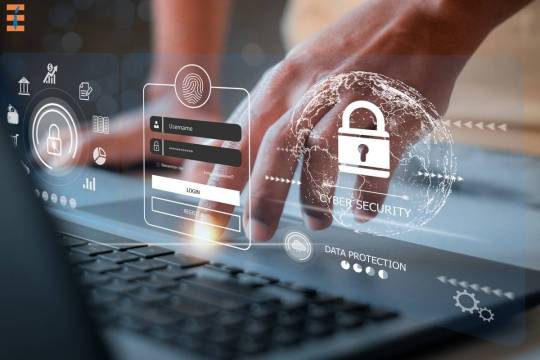
Strengthen the security of supply chains by vetting vendors, suppliers, and third-party partners for cybersecurity practices and adherence to industry standards. Establish contractual agreements and security protocols to ensure the integrity and confidentiality of data shared across the supply chain ecosystem.
9. Foster a Culture of Cyber Resilience
Cultivate a culture of cyber resilience within organizations by promoting transparency, accountability, and adaptability in responding to cyber threats. Encourage open communication, incident reporting, and continuous improvement to mitigate risks and minimize the impact of cyber incidents.
10. Stay Vigilant and Adaptive
Recognize that cybersecurity is an ongoing process requiring constant vigilance and adaptation to evolving threats and vulnerabilities. Stay informed about emerging cyber threats, trends, and tactics through threat intelligence feeds, industry forums, and cybersecurity communities.
Conclusion:
Addressing the multifaceted challenges posed by cyber threats requires a comprehensive and coordinated approach involving technology, education, collaboration, and innovation. By understanding the nature of cyber threats, implementing proactive security measures, fostering a culture of cyber resilience, and embracing emerging technologies, individuals, organizations, and governments can effectively mitigate risks and enhance cybersecurity posture. In an increasingly interconnected and digital world, securing the integrity, confidentiality, and availability of data and systems is paramount to safeguarding our collective digital future. Through collective efforts and shared responsibility, we can navigate the complex landscape of cyberspace and build a safer, more resilient digital ecosystem for generations to come.
0 notes
Text
Transforming Education with AI: Sal Khan’s Vision for the Future

S
H
A
R
E
When GPT-4 launched last week, it took the internet by storm. This new iteration of OpenAI’s model has reached an unprecedented level of lifelikeness, making conversations with AI feel almost like talking to a real person. The technology’s responsiveness and accuracy have opened up countless possibilities, one of the most promising being its application in education. Imagine every student having access to a personal tutor powered by this technology, capable of providing individualized instruction and support.
Sal Khan, a trailblazer in educational innovation, explores this idea in his latest book, Brave New Words. Sal is best known for founding Khan Academy in 2006, an online educational platform that has since educated over 150 million people worldwide. His book delves into the transformative potential of AI in education, presenting a future where AI significantly enhances both student outcomes and teacher experiences.
Sal Khan argues that AI can provide personalized learning experiences that are often unattainable in traditional classroom settings. Drawing from his work on Khanmigo, an AI-powered tutor, he illustrates how AI can deliver the kind of one-on-one guidance that most students lack due to resource constraints. As he points out, hiring a dedicated human tutor for every student is prohibitively expensive, but AI tutors can fill this gap effectively.
AI in the Classroom: A Game-Changer for Learning
Imagine being a seventh-grade student struggling with math. With an AI tutor, complex problems can be broken down into manageable steps, and personalized explanations are provided when you get stuck. This AI doesn’t just give answers; it offers tailored practice questions to reinforce understanding and boost confidence.
Moreover, AI can bring history to life by allowing students to interact with historical figures or literary characters. For instance, learning about Abraham Lincoln’s leadership during the Civil War becomes more engaging when you can have a “conversation” with the 16th president himself.
When it comes to writing assignments, AI can help overcome the initial hurdle of a blank page. It can suggest thought-starters, provide instant feedback on outlines, and offer real-time evaluations of drafts. This level of detailed, immediate assistance is something traditional educational tools can’t match.
The concern of whether using AI constitutes cheating is valid, but Sal Khan likens AI to other accepted tools like spellcheckers and Grammarly. When used appropriately, AI assists students in progressing past sticking points rather than doing the work for them. Many educators who initially banned AI in classrooms are now advocating for its use, recognizing its potential to enhance learning rather than replace it.
Personalized AI Tutors? Sal Khan on Transforming Education | Amanpour and Company
youtube
Supporting Teachers: AI as an Empowering Tool
Beyond student benefits, AI has the potential to revolutionize teaching by alleviating some of the burdens that educators face. Tasks like lesson planning and grading, which consume significant portions of a teacher’s day, can be efficiently handled by AI, allowing teachers to focus more on inspiring and supporting their students.
AI can also provide teachers with instant feedback on student progress, enabling a new level of personalized instruction. By automating routine tasks, AI frees up teachers to build stronger relationships with their students and address individual needs more effectively.
There are challenges to integrating AI into education, such as ensuring privacy and addressing biases, as well as providing the necessary technology to all students. However, the potential benefits make it a worthy pursuit. AI could be a powerful equalizer, providing high-quality education to students regardless of their circumstances.
During a recent visit to First Avenue School in Newark, New Jersey, where Khanmigo is being piloted, the positive impact of AI in the classroom was evident. Students and teachers alike are beginning to see the benefits, signaling a promising future for AI in education. Sal Khan’s Brave New Words offers a compelling vision of this future, making it a must-read for anyone interested in the intersection of technology and education.
Also Read: Brain-Based Learning: A Paradigm Shift in Education
0 notes
Text
The Ripple Effect: How Education Affects Society
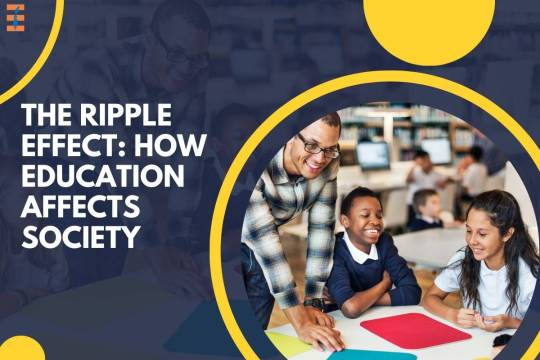
S
H
A
R
E
Education stands as the cornerstone of societal development, wielding a profound influence that extends far beyond the classroom walls. Its impact resonates through generations, shaping cultural norms, economic landscapes, and political dynamics. From fostering critical thinking to promoting social cohesion, the role of education in society is multi-faceted and transformative. In this discourse, we delve into the intricate interplay between how education and societal evolution, unraveling the myriad ways in which education affects society.
Here are 8 myriad ways in which education affects society:
1. Empowering Minds
At its essence, education affects society by empowering individuals by equipping them with knowledge, skills, and perspectives necessary for personal and professional growth. It serves as a catalyst for intellectual curiosity, igniting a thirst for learning that transcends boundaries. By nurturing cognitive abilities and fostering a culture of inquiry, education cultivates innovators, problem solvers, and thought leaders who drive progress and innovation in diverse fields. From scientific breakthroughs to artistic masterpieces, the fruits of education enrich human civilization, propelling us towards greater heights of achievement.
2. Economic Prosperity
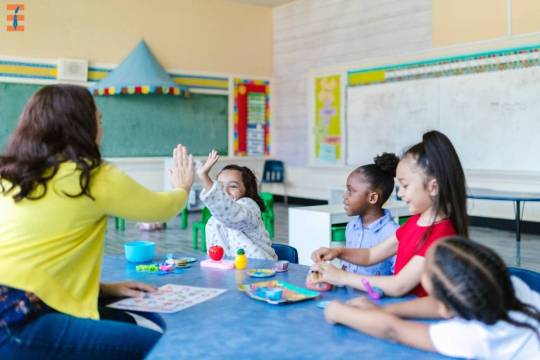
Education affects society by forming the bedrock of economic prosperity, serving as the engine of innovation and productivity. A skilled workforce honed through quality education, fuels economic growth by driving technological advancements, entrepreneurial endeavors, and industrial development. Moreover, education enhances labor market participation and facilitates upward mobility, enabling individuals to secure better-paying jobs and improve their living standards. In this regard, investments in education yield substantial returns, both in terms of individual livelihoods and national economies, fostering sustainable development and reducing socio-economic disparities.
3. Fostering Social Cohesion
Education affects society by playing a pivotal role in fostering social cohesion and building inclusive communities. By promoting values of tolerance, empathy, and mutual respect, education cultivates a culture of understanding and appreciation for diversity. Educational institutions serve as melting pots where individuals from varied backgrounds come together, transcending cultural barriers and forging meaningful connections. Furthermore, education instills civic virtues and democratic principles, empowering citizens to actively participate in the political process and advocate for social justice. In essence, education serves as a unifying force that binds society together, bridging divides and nurturing a sense of belonging among its members.
4. Combatting Ignorance and Prejudice
One of the most potent weapons against ignorance and prejudice is education. By dispelling misconceptions and challenging stereotypes, education affects society by fostering greater cross-cultural understanding and promoting social harmony. Through exposure to diverse perspectives and experiences, individuals gain insights into the complexities of the human condition, fostering empathy and compassion towards others. Moreover, education equips individuals with the critical thinking skills necessary to discern fact from fiction, enabling them to navigate an increasingly complex and interconnected world with confidence and discernment. In this way, education serves as a bulwark against the forces of intolerance and bigotry, laying the groundwork for a more just and equitable society.
5. Promoting Health and Well-being

Education is intricately linked to health outcomes and overall well-being, exerting a profound influence on lifestyle choices, healthcare access, and disease prevention. Education affects society by imparting knowledge about nutrition, hygiene, and preventive healthcare practices, education empowers individuals to make informed decisions that promote their physical and mental health. Furthermore, education plays a crucial role in breaking the cycle of poverty and improving access to healthcare services, thereby reducing disparities in health outcomes across socio-economic groups. Through health education initiatives and public awareness campaigns, education emerges as a powerful tool for promoting healthy behaviors and combating endemic diseases, contributing to the overall welfare of society.
6. Catalyzing Technological Advancement
In an era defined by rapid technological innovation, education emerges as a linchpin for navigating the complexities of the digital age. By fostering digital literacy and technological proficiency, education affects society by equipping individuals with the skills necessary to thrive in an increasingly digitized world. Moreover, education fuels scientific discovery and technological advancement by nurturing the next generation of innovators and problem solvers. From STEM education programs to interdisciplinary research initiatives, education serves as a crucible for innovation, driving progress in fields ranging from artificial intelligence to renewable energy. In this regard, investments in education are essential for ensuring continued technological advancement and global competitiveness in the 21st century.
7. Education as a Catalyst for Sustainable Development
In the face of pressing global challenges such as climate change, resource depletion, and environmental degradation, education emerges as a potent catalyst for sustainable development. By promoting environmental literacy and instilling a sense of stewardship for the planet, education empowers individuals to make ecologically responsible choices and advocate for conservation efforts. Furthermore, education fosters innovation in green technologies and sustainable practices, driving the transition towards a more sustainable and resilient society. Through interdisciplinary approaches that integrate environmental education into curricula across disciplines, education equips future generations with the knowledge and skills necessary to address the complex challenges of environmental sustainability.
8. How Education Affects Society in Conflict Resolution and Peacebuilding

Education plays a pivotal role in conflict resolution and peacebuilding efforts, offering a pathway towards reconciliation, tolerance, and social cohesion in divided societies. By promoting intercultural dialogue and understanding, education helps to break down barriers of mistrust and hostility, fostering empathy and cooperation among diverse communities. Moreover, education empowers individuals to critically examine the root causes of conflict and injustice, enabling them to become agents of positive change in their communities. Through peace education initiatives that teach conflict resolution skills and promote non-violent communication, education contributes to the cultivation of a culture of peace and reconciliation, laying the foundation for lasting stability and prosperity.
Challenges and Opportunities in Education Reform
Despite its transformative potential, education systems around the world face a myriad of challenges, including inadequate funding, unequal access, and outdated curricula. Addressing these challenges requires bold and innovative approaches to education reform that prioritize equity, quality, and relevance. Investments in teacher training and professional development are essential for ensuring that educators are equipped with the skills and resources necessary to deliver high-quality instruction. Moreover, efforts to expand access to education, particularly for marginalized and vulnerable populations, are crucial for promoting social inclusion and reducing disparities in educational outcomes.
At the same time, advances in technology offer unprecedented opportunities to revolutionize education delivery and expand access to learning opportunities. Online learning platforms, digital resources, and mobile technologies have the potential to reach learners in remote and underserved communities, providing them with access to high-quality educational content and resources. Furthermore, innovative pedagogical approaches such as project-based learning, experiential learning, and competency-based education can enhance student engagement and promote deeper learning outcomes.
Conclusion:
In conclusion, education stands as a cornerstone of societal progress and human development, shaping the trajectory of our collective future in profound ways. Education affects society, and from fostering economic prosperity and social cohesion to promoting environmental sustainability and peace, the transformative power of education is undeniable. As we confront the complex challenges of the 21st century, investing in education must remain a top priority for governments, policymakers, and stakeholders across sectors. By harnessing the potential of education to empower individuals, build resilient communities, and drive positive change, we can create a more just, equitable, and sustainable world for present and future generations.
0 notes
Text
Student Using Handheld ‘Hacking Device’ Wreaks Havoc at Utah High School
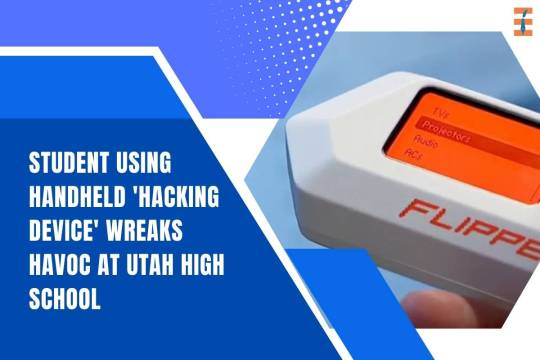
S
H
A
R
E
A single student wielding a handheld hacking device wreaked havoc at Grand County High School in Moab, Utah, sparking concerns among school officials about disruptions in classroom technology. Identified as a “Flipper Zero,” this device, capable of manipulating various types of technology, caused widespread confusion and distress among both teachers and students.
The ordeal began in early January 2024 when a teacher at Grand County High School noticed irregular patterns of technology malfunctioning in her classroom. Devices seemingly turned on and off autonomously, creating an eerie atmosphere that left the teacher and students bewildered. The teacher, initially attributing the disruptions to supernatural forces, was deeply unsettled, with the situation even reducing her to tears, according to eyewitness accounts.
“It completely threw her off, I mean she thought there were ghosts in her classroom. I mean bringing someone to tears, that’s what happened,” remarked a student, highlighting the emotional toll of the incident.
It was the students who ultimately alerted administrators to the true cause of the disruptions. The hacking device responsible, the Flipper Zero, is a versatile handheld tool capable of manipulating various forms of technology, including turning them on and off remotely. Prompt action was taken by school officials to identify and remove the device from campus premises.
Quick Response to Device Threat, Caution Urged
“We acted and reacted very quickly, ensuring that the device is no longer on our campus,” stated a school official, emphasizing the urgency of the situation.
Seamus Hannigan, a Network Engineer for the Grand County School District, expressed concern over the capabilities of the Flipper Zero, labeling it as both potent and potentially hazardous in the wrong hands. Hannigan emphasized the need for caution in handling such hacking devices, citing their potential for widespread disruption and damage.
Despite swift intervention, the Flipper Zero had already caused tangible harm. Reports indicate that a cell phone was permanently damaged, while several school devices required extensive resetting and security measures to mitigate the impact. However, it was the psychological impact on teachers and students that resonated most profoundly.
“There will be people that go out and buy this device,” Hannigan cautioned, urging users to exercise responsibility and restraint. “Please be very careful with how you use it because the impact can be astronomical.”
Authorities reinforced the seriousness of the incident, with Assistant Police Chief James Blanton underscoring the legal repercussions of disrupting school operations. The perpetrator, identified by a school resource officer, faced charges for their actions.
Student using ‘hacking device’ wreaks havoc at Grand County High School
youtube
Navigating the Legal and Social Implications of School Disruption
“Disrupting school operations is a class B misdemeanor,” affirmed Blanton, signaling the gravity of the offense.
While the student responsible for the incident faced disciplinary action, including legal consequences, the broader community received a stern warning. Both school administrators and local law enforcement urged parents to exercise vigilance in monitoring their children’s access to such potentially harmful devices.
“Do your due diligence as a parent and protect your kid from these devices,” advised Blanton, highlighting the importance of proactive parental oversight.
As the affected teacher returned to the classroom following a tumultuous period, the incident served as a sobering reminder of the evolving challenges posed by technology in educational settings. Vigilance, education, and responsible usage emerged as crucial safeguards against the misuse of disruptive technologies like the Flipper Zero.
0 notes
Text
Understanding and Supporting Individuals with Learning Disabilities
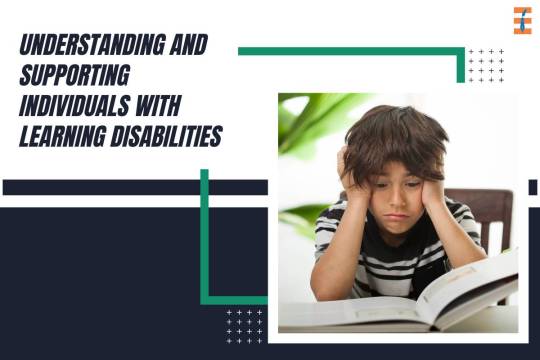
S
H
A
R
E
Learning disabilities are often misunderstood and underestimated conditions that affect millions of people worldwide. Despite the prevalence of learning incapacities, there is still a significant lack of awareness and understanding surrounding them. In this article, we delve into the complexities of learning disabilities, exploring their definition, causes, types, and most importantly, strategies for support and empowerment.
Defining Learning Disabilities
It refers to a group of neurological disorders that impact the brain’s ability to receive, process, store, and respond to information. These difficulties manifest in various areas such as reading, writing, mathematics, reasoning, and comprehension. Importantly, learning incapacities are not indicative of intelligence; individuals with learning incapacities often possess average or above-average intelligence levels.
Understanding the Causes
The exact causes of this remain unclear, but research suggests a combination of genetic, environmental, and neurological factors. Genetic predisposition plays a significant role, with learning disabilities often running in families. Additionally, prenatal exposure to toxins, premature birth, birth complications, and early childhood experiences can contribute to the development of it.
Types of Learning Disabilities
It encompasses a range of conditions, each with its unique characteristics and challenges:
1. Dyslexia
Affecting reading and language processing skills, dyslexia makes it difficult for individuals to decode words, recognize spelling patterns, and comprehend written text.
2. Dysgraphia

Individuals with dysgraphia struggle with writing skills, experiencing difficulties with handwriting, spelling, and organizing thoughts on paper.
3. Dyscalculia
Dyscalculia affects mathematical abilities, making it challenging to understand numerical concepts, perform calculations, and solve mathematical problems.
4. Auditory Processing Disorder (APD)
APD impairs the brain’s ability to interpret sounds, leading to difficulties in processing auditory information, following instructions, and distinguishing between similar sounds.
5. Visual Processing Disorder
This condition affects how the brain processes visual information, causing difficulties with tasks such as reading, writing, and spatial awareness.
Support and Strategies for Success
While this presents unique challenges, early identification, and appropriate support can significantly enhance an individual’s quality of life and academic success. Here are some strategies for supporting individuals with learning incapacities:
1. Individualized Education Plans (IEPs)
IEPs outline specific learning goals, accommodations, and support services tailored to the individual’s needs. These plans ensure that students receive personalized attention and assistance in the classroom.
2. Multisensory Learning Approaches
Utilizing multiple senses, such as sight, sound, and touch, can help individuals with learning incapacities better understand and retain information. Techniques like incorporating visual aids, interactive activities, and hands-on learning can enhance comprehension and engagement.
3. Assistive Technology

Assistive technology tools and software can level the playing field for individuals with learning disabilities. Text-to-speech software, speech recognition programs, graphic organizers, and audiobooks are examples of assistive technology that can support reading, writing, and communication skills.
4. Positive Reinforcement and Encouragement
Building self-esteem and confidence is essential for individuals with learning disabilities. Providing positive reinforcement, celebrating achievements, and fostering a supportive learning environment can empower individuals to overcome challenges and reach their full potential.
5. Collaborative Approach
Collaboration between educators, parents, healthcare professionals, and support staff is crucial in effectively addressing the needs of individuals with learning disabilities. By working together and sharing insights and resources, stakeholders can develop comprehensive strategies for success.
6. Challenging Stigma and Promoting Inclusion
Despite progress in understanding and supporting individuals with learning disabilities, stigma and misconceptions persist. It is essential to challenge these stereotypes and promote inclusivity and acceptance. Emphasizing the strengths and talents of individuals with learning disabilities, celebrating diversity, and advocating for equal opportunities can create a more inclusive society where everyone has the chance to thrive.
Looking Beyond Limitations
It’s crucial to recognize that individuals with learning disabilities possess a diverse range of talents, skills, and perspectives that enrich our communities. By embracing neurodiversity—the understanding that neurological differences are natural and valuable—we can create environments that celebrate individual strengths and accommodate diverse learning styles.
Empowering individuals with learning disabilities involves not only providing necessary accommodations but also fostering a culture of acceptance and support. Schools, workplaces, and communities play pivotal roles in creating inclusive environments where everyone feels valued and respected.
Education is Key
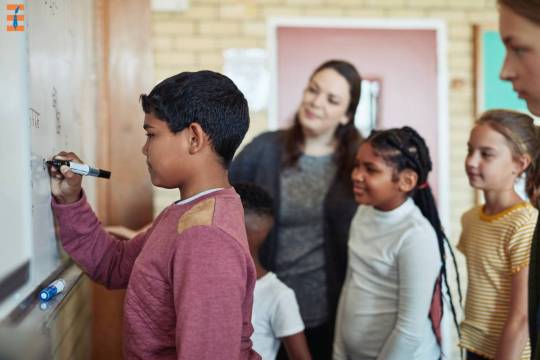
Education is a powerful tool for breaking down barriers and creating opportunities for individuals with learning disabilities. By equipping educators with the knowledge and resources to support diverse learners, we can ensure that every student receives a quality education tailored to their needs.
Professional development programs, workshops, and resources focused on understanding learning disabilities and implementing effective teaching strategies are essential for educators at all levels. By promoting collaboration and sharing best practices, we can enhance the educational experience for students with learning disabilities and empower them to succeed academically and beyond.
Advocacy and Awareness
Advocacy plays a crucial role in raising awareness, influencing policy, and promoting societal change. Individuals, families, educators, and advocates must work together to advocate for the rights and needs of individuals with learning disabilities.
This advocacy includes:
Raising awareness about the prevalence and impact of learning incapacities.
Advocating for policies and legislation that ensure equal access to education, employment, and healthcare.
Promoting research and innovation in the field of learning incapacities.
Challenging stereotypes and misconceptions through education and dialogue.
Amplifying the voices of individuals with learning incapacities and ensuring their perspectives are heard and valued.
By amplifying our collective voices and advocating for change, we can create a more inclusive and equitable society where individuals with learning disabilities are empowered to reach their full potential.
Conclusion
Learning disabilities affect millions of individuals worldwide, presenting unique challenges that require understanding, support, and advocacy. By fostering awareness, promoting acceptance, and providing necessary accommodations, we can create inclusive environments where individuals with these disabilities can thrive academically, professionally, and personally.
As a society, we must recognize the strengths and talents of individuals with learning disabilities and celebrate their contributions to our communities. By working together to challenge stigma, promote inclusion, and advocate for equal opportunities, we can create a more just and compassionate world for all.
Let us commit to unlocking the potential of individuals with learning disabilities and building a society where everyone is valued, supported, and empowered to succeed. Together, we can make a difference and create a brighter future for individuals of all abilities.
#LearningDisabilitiesAwareness#SupportLD#InclusionMatters#DyslexiaAwareness#ADHDSupport#Neurodiversity
0 notes
Text
Wiley Shuts 19 Scholarly Journals Amid AI Paper Mill Problems

S
H
A
R
E
US publishing house Wiley announced this week the discontinuation of 19 scientific journals managed by its Hindawi subsidiary, marking a significant move in response to a long-standing scholarly journals publishing scandal. Wiley’s decision to cease the use of the Hindawi brand, acquired in 2021, came after a series of unsettling revelations. In May 2023, the company shuttered four journals as part of efforts to combat what it termed “systematic manipulation of the publishing process.” This manipulation primarily stemmed from the publication of papers originating from paper mills, organizations exploiting academic publishing for financial gain. Over the past two years, Wiley has retracted more than 11,300 papers from its Hindawi portfolio, underlining the severity of the situation.
The Role of AI in Publication Manipulation
The proliferation of artificial intelligence (AI) has exacerbated the challenges facing scholarly journals publishing integrity. A Wiley-authored white paper released in December detailed the methods employed by paper mills, which include leveraging AI for manuscript fabrication, image manipulations, and gaming the peer review process. Notably, Wiley’s woes coincided with the departure of its president and CEO Brian Napack in October 2023, signaling the gravity of the situation.
Financially, the Hindawi scandal took a toll on Wiley, with an $18 million decline in research publishing revenue reported in its fiscal Q2 2024 earnings report. Acknowledging the gravity of the situation, Wiley joined United2Act, an industry initiative aimed at combating paper mills. Wiley also introduced new screening technology to identify papers potentially misusing generative AI before publication, underscoring the industry’s efforts to tackle the issue head-on.
A Broader Crisis in Scholarly Integrity
While Wiley’s Hindawi scandal highlights significant challenges within the publishing realm, concerns over research integrity extend beyond its publications. A study published in Nature in July revealed troubling findings, suggesting that up to a quarter of clinical trials may be problematic or entirely fabricated. The rise of generative AI tools has compounded these challenges, making fraudulent content generation more accessible.
Tools like ChatGPT, which debuted during a period of increased submission volume to platforms like ArXiv, have facilitated a surge in submissions, particularly in computer science, physics, and mathematics categories. These developments underscore the urgent need for comprehensive strategies to safeguard scholarly publishing from manipulation and ensure the integrity of academic research.
By addressing the Hindawi scandal and its implications for scholarly journal publishing, Wiley’s actions reflect a broader industry response to the challenges posed by paper mills and AI-driven manipulation. However, the road ahead necessitates sustained efforts from stakeholders across the academic community to uphold the fundamental principles of research integrity and ensure the credibility of scholarly output in an increasingly complex digital landscape.
Also Read: Pedagogical Innovation: Exploring Flipped Classroom Models
0 notes